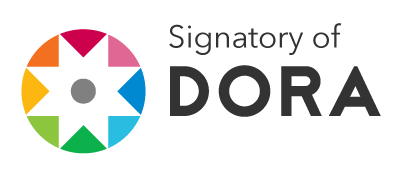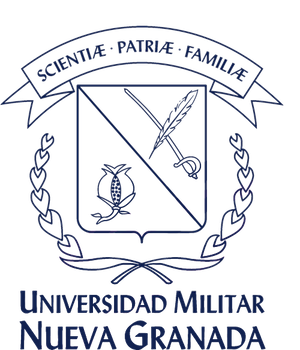Alternative Oxidase Gene (Aox I): A Good DNA Barcoding Candidate for the Genus Fusarium
Resumen
DNA barcoding is a tool for taxonomy analysis that uses a short standard genomic sequence present in all the taxa of interest, which has enough sequence variation to discriminate among species. Members of the genus Fusarium are recognized as saprophytes and important plant and human pathogens, and their taxonomic identification commonly relies on macro and microscopical characteristics and molecular methods. However, identification can be difficult due to the lack of some structures in culture or poor polymorphism in ribosomal DNA sequences. Barcoding could provide an easy and reliable method to overcome these problems. This study is a preliminary study to evaluate sequences of Cox (mitochondrial cytochrome oxidase subunit I) and Aox (alternative oxidase) as potential DNA barcodes for identification of Fusarium species. DNA was extracted from 12 Fusarium isolates previously identified by traditional methods into different complexes: F. solani, F. oxysporum and Gibbellera fujikuroi. For PCR amplification of Cox 1 gene, primers designed in a previous study were used and amplicons of approximately 600 pb were observed in all the isolates. For the amplification of Aox, primers were designed by our group showing amplification of a region of 800 bp approximately in all Fusarium species. The sequences were clustered using phylogenetic trees, additionally, intra-and interspecific divergence were estimated with the K2P model. These results showed that the Aox sequence clustered the isolates into the appropriate Fusarium species complex, according to previous morphological characterization, indicating its potential to differentiate Fusarium isolates to the species level. Similarity analysis of Cox1 sequences showed insufficient variation to discriminate among isolates. In conclusion, the 800 bp sequence of AOX is a candidate to become a DNA barcode sequence, but more species and isolates are needed to further test its discriminating ability.Descargas
Lenguajes:
ENReferencias bibliográficas
Altschul, S.F., W. Gish, W. Miller, E.W. Myers, and D.J. Lipman. 1990. Basic local alignment search tool. Journal of Molecular Biology 215:403-410.
Atteia, A., R. van Lis, J.J. van Hellemond, A.G. Tielens, W. Martin, and K. Henze. 2004. Identification of prokaryotic homologues indicates an endosymbiotic origin for the alternative oxidases of mitochondria (AOX) and chloroplasts (PTOX). Gene. 330:143-148.
Barrett, R. and Hebert, P. D. N. 2005. Identifying spiders through ADN barcodes. Canadian Journal of Zoology 83: 481–491.
Ebach, M.C., and C. Holdrege. 2005. DNA barcoding is no substitute for taxonomy. Nature 434:697.
Edgar, R.C. 2004. MUSCLE: multiple sequence alignment with high accuracy and high throughput. Nucleic Acids Research 32:1792-1797.
Geiser, D.M. Jimenez-Gasco, M. M., Kang, S., Makalowska, I., Veeraraghavan, N., Todd J. Ward, Zhang, N. Kuldau, G. A. and O’Donnell K. 2004. FUSARIUM-ID v. 1.0: A ADN sequence database for identifying Fusarium. European Journal of Plant Pathology 110: 473–479.
Gilmore, S.R., T. Grafenhan, G. Louis-Seize, and K.A. Seifert. 2009. Multiple copies of cytochrome oxidase 1 in species of the fungal genus Fusarium Molecular Ecology Resources 9 Suppl s1:90-98.
Hajibabaei, M., G.A. Singer, P.D. Hebert, and D.A. Hickey. 2007. DNA barcoding: how it complements taxonomy, molecular phylogenetics and population genetics. Trends in Genetics 23:167-172.
Hebert, P.D., A. Cywinska, S.L. Ball, and J.R. deWaard. 2003. Biological identifications through DNA barcodes. Proceedings of the Royal Society B 270:313-321.
Hebert, P.D., M.Y. Stoeckle, T.S. Zemlak, and C.M. Francis. 2004. Identification of birds through DNA Barcodes. PLoS Biology 2:e312.
Kress, W.J., and D.L. Erickson. 2007. A twolocus global DNA barcode for land plants: the coding rbcL gene complements the noncoding trnH-psbA spacer region. PLoS One. 2:e508.
Kress, W.J., and D.L. Erickson. 2008. DNA barcodes: genes, genomics, and bioinformatics. Proceedings of the National Academy of Sciences 105:2761-2762.
Leslie, J. F, & Summerell, B.A. 2006. The Fusarium Laboratory Manual. Blackwell Publishing. Ames, Iowa, USA.
Lorin, S., E. Dufour, and A. Sainsard-Chanet. 2006. Mitochondrial metabolism and aging in the filamentous fungus Podospora anserina. Biochimica et Biophysica Acta 1757:604-610.
Meyer, C.P., and G. Paulay. 2005. DNA barcoding: error rates based on comprehensive sampling. PLoS Biology 3:e422.
Nelson, P.E., Toussoun, T.A. and Marassas, W.F.O. 1983. Fusarium species. The Pennsylvania State University Press. Pennsylvania, USA
Park, B., J. Park, K.C. Cheong, J. Choi, K. Jung, D. Kim, Y.H. Lee, T.J. Ward, K. O'Donnell, D.M. Geiser, and S. Kang. 2011. Cyber infrastructure for Fusarium: three integrated platforms supporting strain identification, phylogenetics, comparative genomics and knowledge sharing. Nucleic Acids Research 39: 640-646.
Posada, D. 2008. jModelTest: phylogenetic model averaging. Molecular Biology and Evolution 25:1253-1256.
Schoch, C.L., K.A. Seifert, S. Huhndorf, V. Robert, J.L. Spouge, C.A. Levesque, and W. Chen. 2012. Nuclear ribosomal internal transcribed spacer (ITS) region as a universal DNA barcode marker for Fungi. Proceedings of the National Academy of Sciences U S A 109:6241-6246.
Seifert, K.A. 2009. Progress towards DNA barcoding of fungi. Molecular Ecology Resources9 Suppl s1:83-89.
Seifert, K.A., R.A. Samson, J.R. Dewaard, J. Houbraken, C.A. Levesque, J.M. Moncalvo, G. Louis-Seize, and P.D. Hebert. 2007. Prospects for fungus identification using CO1 DNA barcodes, with Penicillium as a test case. Proceedings of the National Academy of Sciences U S A 104:3901-3906.
Stamatakis, A. 2006. RAxML-VI-HPC: maximum likelihood-based phylogenetic analyses with thousands of taxa and mixed models. Bioinformatics 22:2688-2690.
Tamura, K., J. Dudley, M. Nei, and S. Kumar. 2007. MEGA4: Molecular Evolutionary Genetics Analysis (MEGA) software version 4.0.Molecular Biology and Evolution 24:1596-1599.
Bello Rodríguez SP, Losada Herrera, SE, Morales Paredes J. 2011. Una Caracterización de la Equivalencia-Fila de Matrices de Tamaño 2 X 3. Revista Facultad de Ciencias Básicas, 7:136 – 139.












